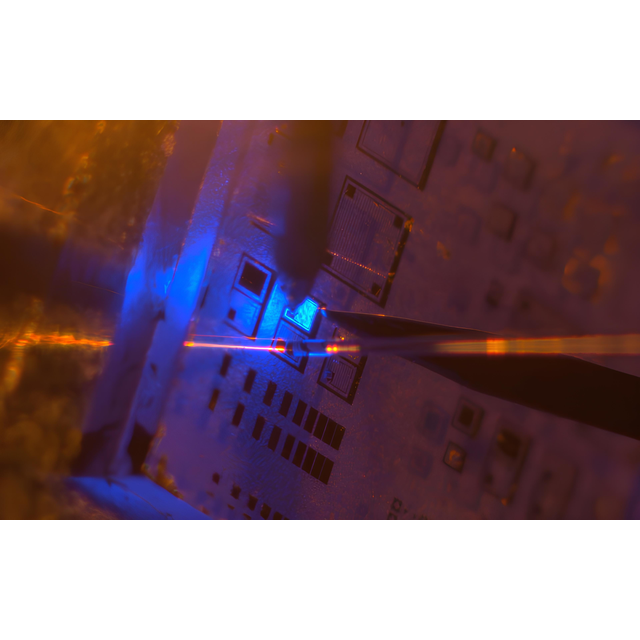The interferometric control of dissipation in a two-port system is a fruitful concept enabling the enhancement or cancellation of the input amplitudes as a function of their relative phases. Here, beyond the canonical configuration of Coherent Perfect Absorption (CPA), we apply this concept to two simultaneously excited strongly-coupled nanoscale electromechanical resonators submitted to independently controlled phase-shifted excitations. Both subsystems are read simultaneously by optical means allowing us to completely reconstruct the signature of coherent annihilation or amplification on both quadrature. We evidence that the mechanical modes amplitude can be enhanced or inhibited with respect to the case of single port excitation while phase experiences strong variations with the excitation imbalance and phase difference. Meanwhile, phase singularities with opposite topological charges are observed for mechanical normal modes. Close to the phase singularity, we demonstrate that the input of a weak phase modulation induces a large, pure phase modulation of the normal mode. These experimental demonstrations are fully modelled via the mechanical dynamical equations of our system. The interferometric control may open avenues for novel low-power amplitude controlled phase modulation schemes and vice-versa for potential switches and logical gates.
Coherent Perfect Absorption (CPA), the coherent interferometric control of two-port systems, has attracted lots of interest as “Time reversed laser”. It has been mainly investigated within the canonical geometry of two counter-propagating fields and almost exclusively in optics. Recently, other approaches using two strongly coupled non-identical sub-systems have been developed, still in the field of optics. These ones allow to address only partially the behaviour of the overall system: the amplitude signature is recovered but no information about the phase behaviour is extracted. Thus, a complete understanding and investigation of the physics in such studies is lacking.
In this article, we present for the first time to our knowledge an experimental investigation of coherent interferometric control in nano-mechanical resonators. Our system consists of two identical nano-electromechanical resonators which are mechanically coupled and whose displacements are both and simultaneously read by optical means. We establish and evidence the strong coupling regime between the two resonators. This mandatory condition allows us to reconstruct the signature of coherent amplification or annihilation with respect to the single port excitation for a specific phase mismatch and driving ratio between the drives of the two ports. Within this framework, we reconstruct the phase evolution of the mechanical modes and evidence phase singularities whose topological charge change with the mode considered. Finally, we take advantage of this peculiar feature to demonstrate high contrast, pure phase modulation of an input signal using a priori arbitrary low input drives.
Though demonstrated on nano-electromechanical resonators, This approach is quite general and applies to a broad range of physical systems. We therefore think it should appeal a broad audience ranging from physicists, biologists to chemists. At the same time, it constitutes a model system enabling the investigation of various coherent phenomena involving amplitude and/or phase modulation, a domain of active fundamental research with potential applications down the line. Beyond its fundamental vivid prospects, such general mechanism indeed opens interesting prospects for phase switches and photonic modulators or for phase shaping dedicated to sensing or laser spectroscopy at the nanoscale.
References
Coherent interferometric control of strongly-coupled nano-electromechanical resonators
Franck Correia1, Gladys Jara-Schulz1, Guilhem Madiot1, Sylvain Barbay1 & Remy Braive1,2,3
Communications Physics volume 7, Article number: 233 (2024)
DOI : https://doi.org/10.1038/s42005-024-01726-2
Affiliations
1 Centre de Nanosciences et de Nanotechnologies, CNRS, Universit´e Paris-Saclay, Palaiseau, France
2 Université Paris-Cité, 75207 Paris Cedex 13, France
3 Institut Universitaire de France, Paris, France
Contact : Rémy Braive
Figure : SEM image showing photonic crystal membranes connected by a mechanical bridge; Numerical and experimentale evolution of the phase of anti-symmetric mechanical mode (Ψ+) as function of the phase mismatch and driving ratio between the drives of the two ports (Δφ,X)









